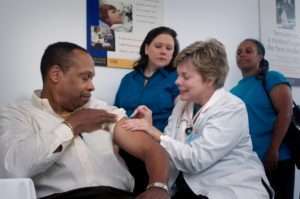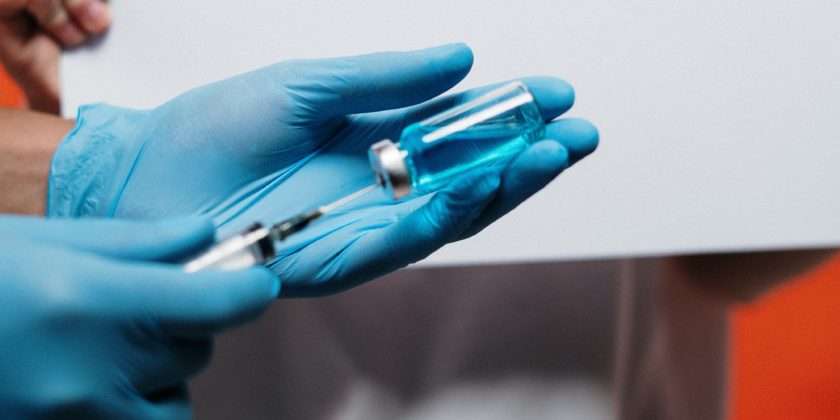Jay Harold took the second of two of Pfizer’s COVID19 vaccines recently. I hadn’t experienced any adverse reactions (the last shot on Feb. 4, 2021).
I’m acutely aware of the past problems in the U.S. healthcare system concerning Black Americans. Jay Harold has also seen the devasting effects of COVID19 and must speak out about the hesitancy of Black Americans to take the COVID19 vaccine. I wouldn’t comment until trying the vaccine myself. Why is Jay Harold disclosing this information?
Nationwide, Black people have died at 1.5 times the rate of white people1.
We’ve lost at least 63,975 Black lives to COVID-19 to date. Black people account for 15% of COVID-19 deaths where race is known according to the COVID19 Tracking Project.
Factors that contribute to increased risk2
Some of the many inequities in social determinants of health that put racial and ethnic minority groups at increased risk of getting sick and dying from COVID-19 include:
- Discrimination: Unfortunately, discrimination exists in systems meant to protect well-being or health. Examples of such systems include health care, housing, education, criminal justice, and finance. Discrimination, which includes racism, can lead to chronic and toxic stress and shapes social and economic factors that put some people from racial and ethnic minority groups at increased risk for COVID-19.[5], [7], [8], [9]

Healthcare access and utilization: People from some racial and ethnic minority groups are more likely to be uninsured than non-Hispanic whites. [10] Healthcare access can also be limited for these groups by many other factors, such as lack of transportation, child care, or ability to take time off of work; communication and language barriers; cultural differences between patients and providers; and historical and current discrimination in healthcare systems. [11] Some people from racial and ethnic minority groups may hesitate to seek care because they distrust the government and healthcare systems responsible for inequities in treatment [12] and historical events such as the Tuskegee Study of Untreated Syphilis in the African American Male and sterilization without people’s permission. [13], [14], [15], [16]
- Occupation: People from some racial and ethnic minority groups are disproportionately represented in essential work settings such as healthcare facilities, farms, factories, grocery stores, and public transportation. [17] Some people who work in these settings have more chances to be exposed to the virus that causes COVID-19 due to several factors, such as close contact with the public or other workers, not being able to work from home, and not having paid sick days. [18]
Money, Money, and Lack of Money!
- Educational, income, and wealth gaps: Inequities in access to high-quality education for some racial and ethnic minority groups can lead to lower high school completion rates and barriers to college entrance. This may limit future job options and lead to lower-paying or less stable jobs. [19] People with limited job options likely have less flexibility to leave jobs that may put them at a higher risk of exposure to the virus that causes COVID-19. People in these situations often cannot afford to miss work, even if they’re sick, because they do not have enough money saved up for essential items like food and other important living needs.

- Housing: Some people from racial and ethnic minority groups live in crowded conditions that make it more challenging to follow prevention strategies. In some cultures, it is common for family members of many generations to live in one household. In addition, growing and disproportionate unemployment rates for some racial and ethnic minority groups during the COVID-19 pandemic[19] may lead to a greater risk of eviction and homelessness or sharing of housing.
These factors and others are associated with more COVID-19 cases, hospitalizations, and deaths in areas where racial and ethnic minority groups live, learn, work, play, and worship.[5],[10], [20], [21] They have also contributed to higher rates of some medical conditions that increase one’s risk of severe illness from COVID-19. In addition, community strategies to slow the spread of COVID-19 may cause unintentional harm, such as lost wages, reduced access to services, and increased stress, for some racial and ethnic minority groups. [22]
There are numerous reasons to say no to taking the COVID19 vaccine. The reason to say yes is to help prevent death from COVID19!
Jay Harold hopes you enjoyed this post, “Jay Harold Takes COVID19 Vaccine!.” Please share it and read more about Jay Harold here. Please take this advice from Muhammad Ali and give it back to others. “Service to others is the rent you pay for your room here on earth.”




